Foothold Traps - Identification, Use and Removing a Dog
The use of Foothold Traps
- Foothold traps used during the regulated trapping seasons will be anchored in some fashion.
- If in water, a foothold trap may be staked to the bottom or to a stake visible above water, and relatively close to shore or structure.
- On dry land, a foothold trap may be attached to a drag or staked to the ground. There may be an animal attractor (small amount of bait or lure) associated with the trap site.
- Removing the foothold trap from the anchor will do nothing to release the dog's foot from the trap. Focus your attention on identifying the type of trap and how to compress the spring(s).
- Injuries from foothold traps are rare. The potential for injury increases with time spent caught.
- Be responsible and pay attention to your dog. If caught, take action immediately. Once removed, massage the captured foot to relieve any tenderness.
- Many foothold traps used during the regulated trapping seasons are the same as those used in research where animals are commonly caught and released. A foothold trap is designed to humanely hold an animal, not injure it.
- Leave the foothold trap at the site - do not take it with you. Emotion may be high, but there is no legal justification for theft or destruction of property.
Releasing a Dog From a Foothold Trap
There are three main types of foot-hold traps, all of which release in a similar manner.
Single Long Spring
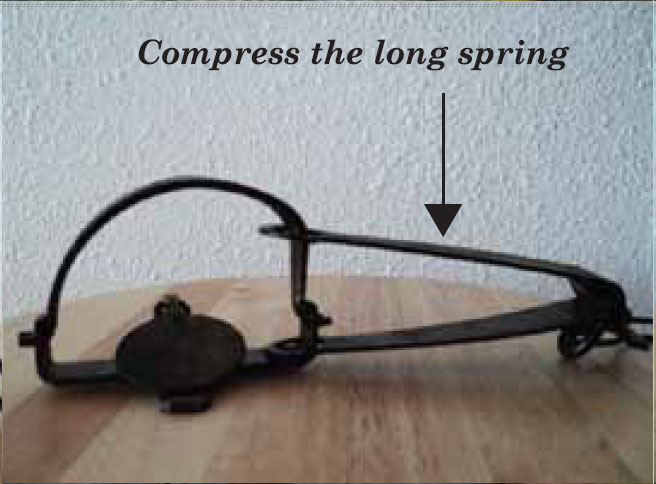
To remove a single long spring, compress the spring to open the trap.
Use your foot if necessary to compress the spring.
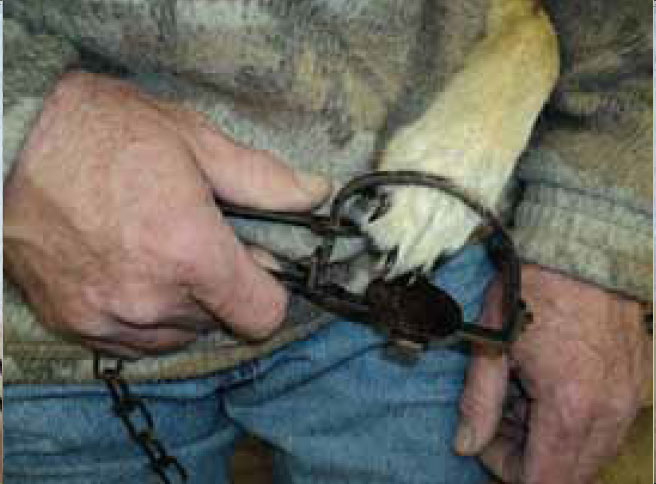
Slide the open trap off the dog's foot.
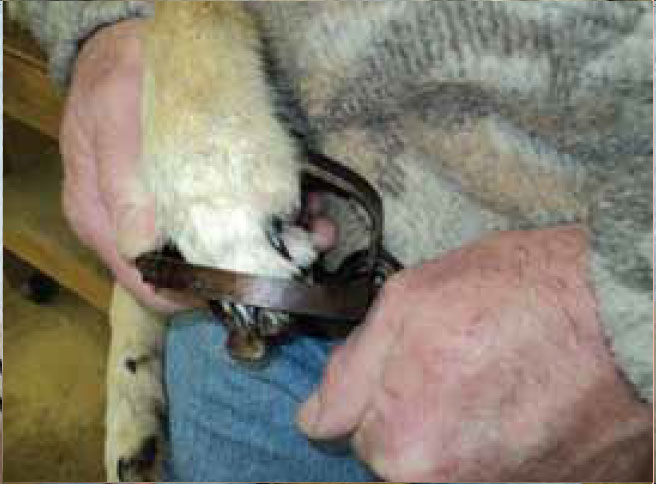
Double Long Spring
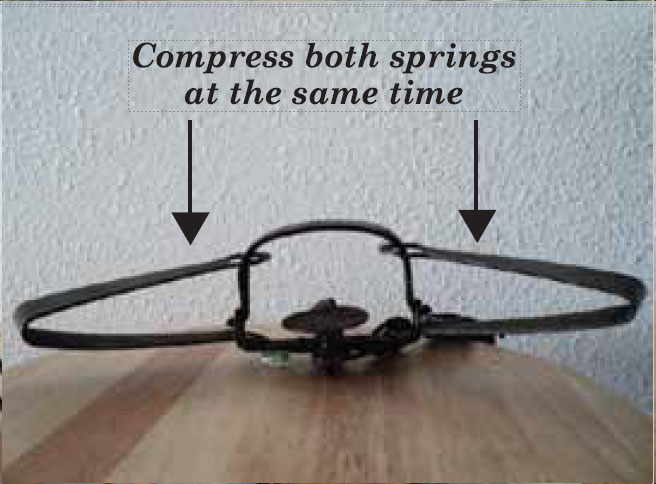
To remove a double long spring, compress both springs at the same time to open the trap.
Use your feet if necessary to compress the springs.
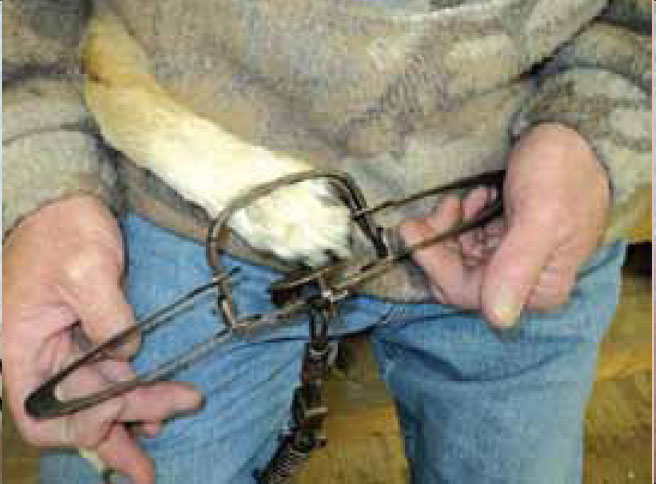
Slide the open trap off the dog's foot.
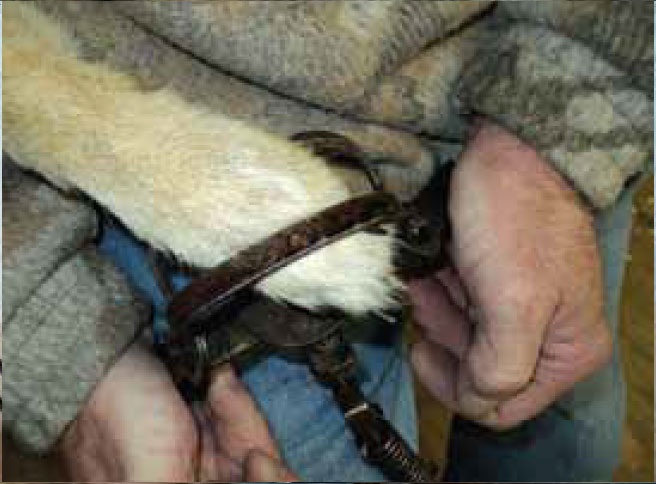
Coil Spring
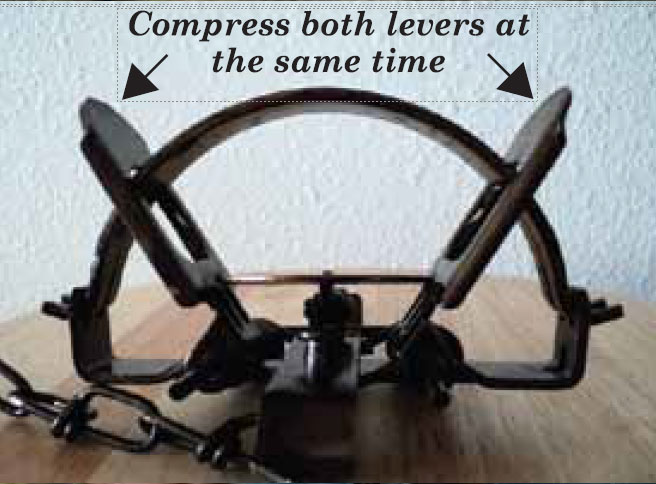
To remove a coil spring, compress the springs at the same time to open the trap.
Use your feet if necessary to compress the springs.
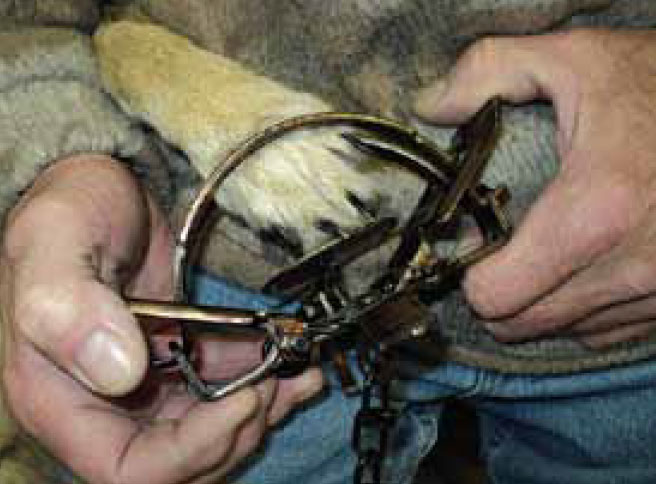
Slide the open trap off the dog's foot.
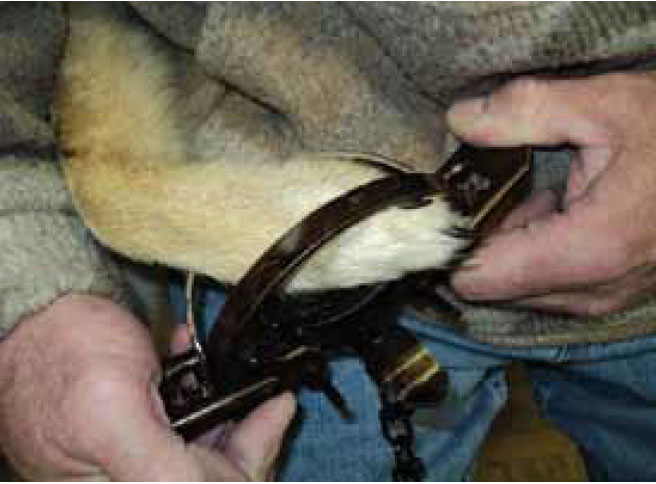
General Trapping Information
In North Dakota, regulated use of foothold traps occurs from October through April. Limited use occurs during late spring and summer by landowners or their agents removing nuisance wild animals. Obtaining permission to go on private property and visiting with landowners will help identify other activities occurring on the same property. Sharing this knowledge will reduce the potential for problems.
Trapping in North Dakota, which includes using foothold traps, is an important component of forbearer management.
Foothold traps you may encounter in or near water are intended to capture muskrat, beaver, and mink; and afield may be fisher, raccoon, skunk, fox, coyote, badger, or bobcat.
Trapping in North Dakota is highly regulated; enforced by game wardens; based on sound science; and backed by continued research.
The North Dakota Game and Fish Department and the North Dakota Fur Hunters and Trappers Association review all reported trap incidents to assure continual success with regulated furbearer harvest and other resource users.
Individuals who want to learn more about trapping in North Dakota have that opportunity by attending a fur harvester education course.
